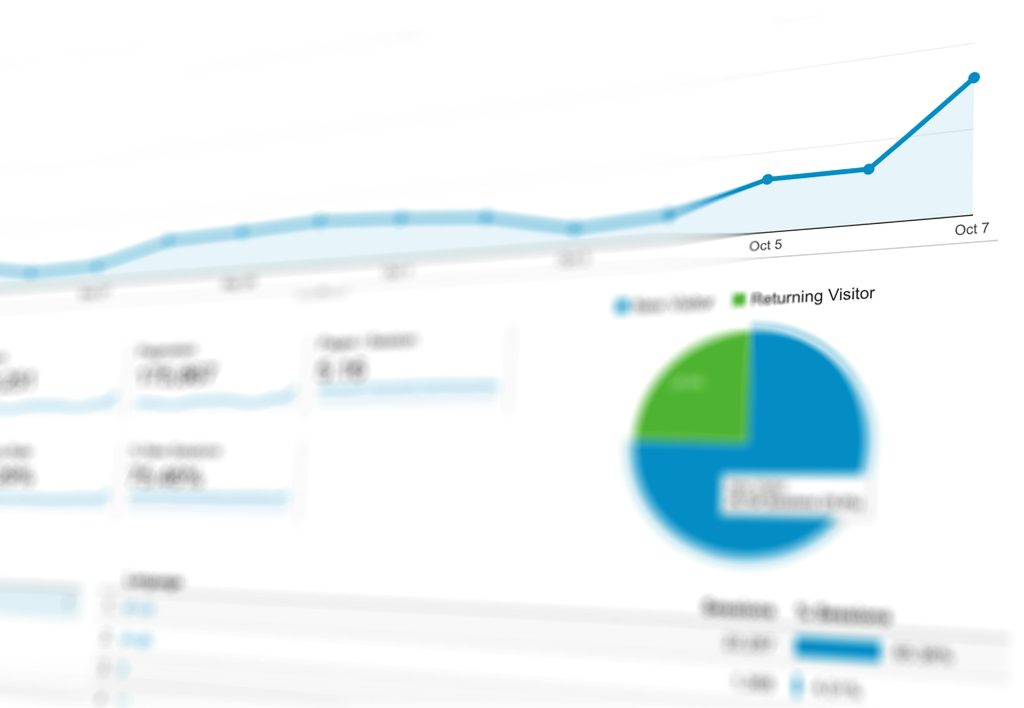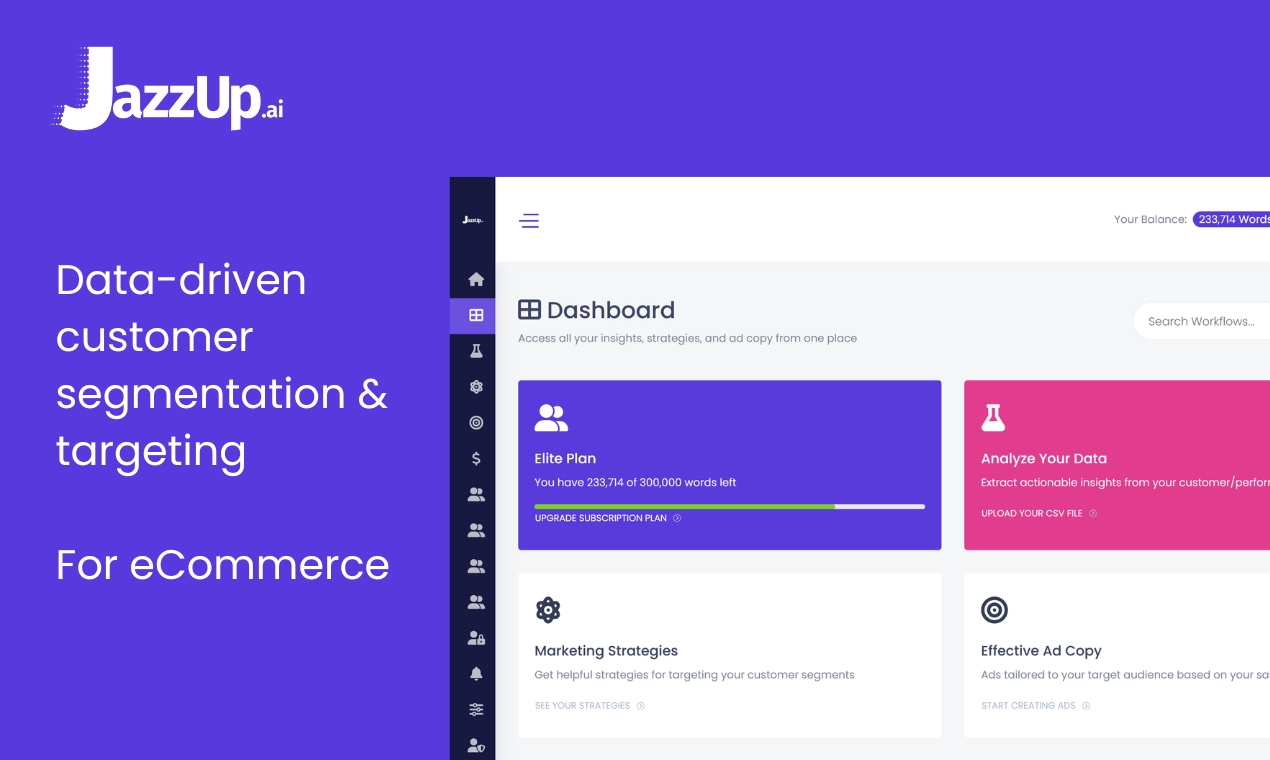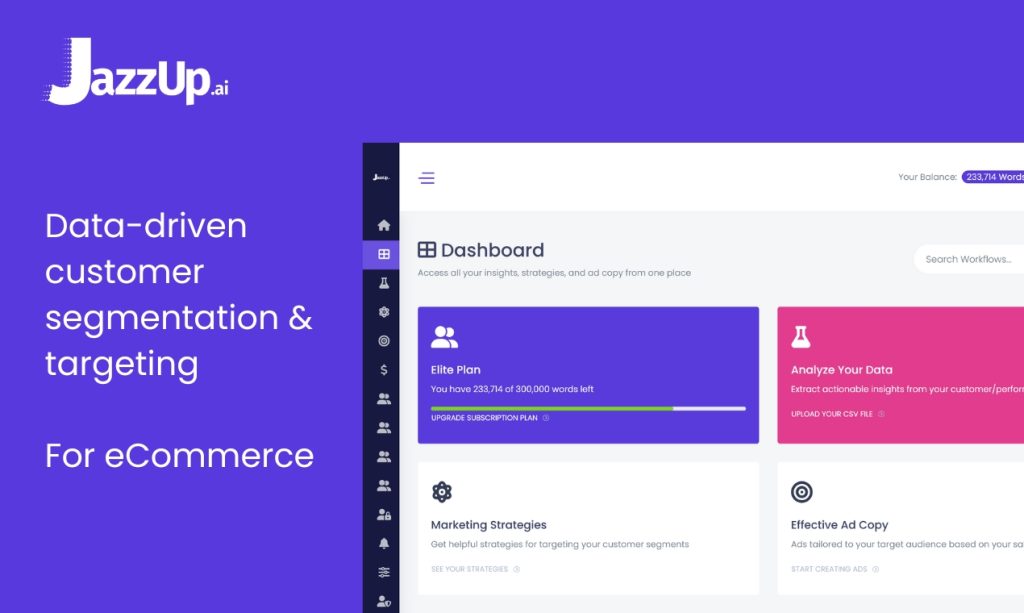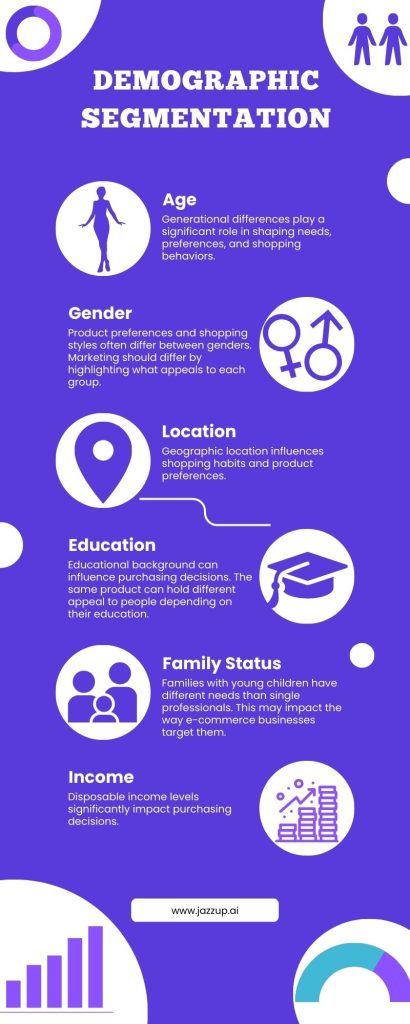
Introduction
In our previous posts, we’ve explored customer segmentation, different customer segmentation strategies and how e-commerce businesses can leverage data analytics for customer segmentation. To recap, customer segmentation, the process of dividing your customer base into distinct groups with similar characteristics, is a powerful tool that empowers e-commerce businesses to deliver targeted marketing campaigns and personalized experiences. However, there are common customer segmentation mistakes that can lead to wasted resources, ineffective marketing efforts, and, ultimately, lost sales.
This article explores 10 common customer segmentation mistakes e-commerce businesses should avoid and best practices for ensuring their segmentation strategy yields positive results. By identifying these pitfalls and implementing effective strategies, you can unlock the true potential of customer segmentation and propel your e-commerce business forward.
#1. Not Aligning Segmentation with Business Goals
A critical yet often overlooked aspect of customer segmentation is defining clear goals. Segmentation without a purpose is like setting sail without a destination. Before diving into data analysis, ask yourself: What do you want to achieve through customer segmentation? Here are some common goals:
- Increase Sales: Segment customers based on purchase behavior and buying power to identify high-value segments. Develop targeted campaigns and promotions tailored to their needs, ultimately driving sales growth.
- Boost Customer Engagement: Segment customers based on interests and online behavior. Create personalized content marketing campaigns and social media strategies that resonate with each segment, fostering deeper engagement.
- Improve Customer Retention: Analyze customer behavior patterns within each segment to identify potential churn risks. Develop targeted retention strategies with personalized offers and loyalty programs to keep valuable customers engaged.
Real-life Scenario
An e-commerce clothing store blindly segments their customer base by demographics (age, gender). They launch generic marketing campaigns for each segment, promoting the same products across all age groups and genders. This approach fails to consider the diverse needs and preferences within each demographic segment and is one of the common customer segmentation mistakes. For example, a 25-year-old woman might be interested in trendy fast fashion, while a 50-year-old man might prioritize comfort and classic styles.
Best Practice
Clearly define your segmentation goals upfront. Align your segmentation strategy with these goals, ensuring you collect and analyze data relevant to achieving your objectives.
#2. Segmenting Based on Instinct or Limited Data
Effective customer segmentation thrives on data. This data acts as your roadmap, revealing genuine customer trends and behavior patterns. By analyzing purchase history, website behavior, and even social media interactions, you gain a deeper understanding of your customer base. This understanding empowers you to segment your audience into distinct groups with similar characteristics and needs.
Here’s why data-driven segmentation matters:
- Uncover Hidden Gems: Data analysis reveals hidden patterns in customer behavior that might escape your intuition. You might discover a segment of budget-conscious shoppers who show high purchase frequency, prompting you to develop targeted campaigns with special discount offers.
- Avoid Misconceptions: Intuition can be misleading. For example, you might assume all young adults are interested in the latest trends. However, data analysis might reveal a segment within this demographic who prioritize comfort and classic styles. Targeted marketing for trendy clothing would miss this valuable customer group.
- Boost Marketing ROI: Data-driven segmentation allows you to tailor your marketing efforts to resonate with each segment’s specific needs and preferences. This targeted approach maximizes your return on investment (ROI) by ensuring your marketing messages reach the right audience at the right time.
So, ditch the guesswork and embrace the power of data. By leveraging data analytics, you can unlock a world of customer insights and create a segmentation strategy that propels your e-commerce business forward.
Real-life Scenario
A subscription box service for pet owners segments its customer base solely based on the type of pet (dog, cat). It assumes all dog owners have the same preferences and sends out identical subscription boxes with dog treats and toys. This approach overlooks the vast diversity within each pet category. For example, some dog owners might have puppies with specific needs, while others might have senior dogs requiring specialized products.
Best Practice
Utilize a variety of data sources to create a comprehensive customer profile for segmentation purposes. Look beyond basic demographics and delve into website analytics data, purchase history, customer surveys, and social media interactions to gain a deeper understanding of your customer base.
#3. Segmenting Too Narrowly or Too Broadly
Segmenting too narrowly can be like having a bowl with just a single oat. While you might have some data on that specific oat, it doesn’t tell you much about the bigger picture. With very narrow segments, you might have insufficient data to draw meaningful insights or create targeted marketing campaigns. For example, segmenting by specific shoe size might not provide enough data points for effective analysis.
On the other hand, segmenting too broadly is like having a giant bowl overflowing with porridge. Sure, you have a lot of data, but it’s all lumped together. This can lead to generic marketing messages that fail to resonate with any specific customer group. Imagine sending the same email blast to everyone, regardless of their interests or purchase history. It’s unlikely to be very effective.
Finding the segmentation sweet spot requires careful consideration. Here’s how to achieve the perfect balance:
- Data Volume: Analyze the amount of customer data you have available. Very narrow segments might work if you have a massive dataset, but with limited data, broader segments might be necessary.
- Actionable Insights: Aim for segments that provide enough data to generate actionable insights. You should be able to identify clear distinctions between segments and tailor marketing efforts accordingly.
- Marketing Efficiency: Consider the efficiency of your marketing efforts. Can you create targeted campaigns for the segments you define? Having too many narrow segments can become unwieldy to manage.
By considering these factors, you can avoid the pitfalls of overly narrow or excessively broad segmentation and achieve the ideal balance for your e-commerce business. Remember, the goal is to create segments that are both insightful and actionable, allowing you to deliver personalized experiences that resonate with your customers.
Real-life Scenario
An online sporting goods retailer segments its customer base by specific sports (basketball, baseball, football). This segmentation might be too narrow, especially if it doesn’t have a large enough customer base for each sport. The retailer might struggle to create targeted marketing campaigns with enough product variety for each segment.
On the other hand, a fitness equipment retailer segments their entire customer base as “fitness enthusiasts.” This approach is too broad and fails to consider the diverse needs within this category. Someone interested in weightlifting would have different equipment requirements than someone focused on yoga.
Best Practice
Aim for a balance in your segmentation strategy. Analyze your customer base size and available data to determine the optimal number of segments. Prioritize segmentation criteria that provide clear distinctions between customer groups while ensuring sufficient data points within each segment for meaningful analysis.
#4. Not Keeping Your Segments Up-to-Date

A segmentation strategy set in stone can quickly become outdated if you don’t keep it up-to-date. Customer needs and preferences evolve over time.
For instance, a young adult who was interested in trendy backpacks for school might graduate and transition to needing professional briefcases. Relying on outdated segmentation criteria can lead to missed opportunities and frustrated customers.
Here’s why keeping your segments fresh is crucial:
- Relevance is Key: Outdated segments might not reflect your current customer base. You could be targeting the wrong audience with irrelevant messaging, leading to decreased engagement and lost sales.
- Evolving Needs: Customer needs and preferences change. Regularly reevaluating your segmentation ensures you capture these shifts and tailor your marketing efforts accordingly.
- Fresh Insights: By revisiting your segmentation criteria, you might uncover new customer trends and opportunities for growth.
To stay ahead of the curve, schedule regular reviews of your segmentation strategy. Leverage customer feedback surveys, website analytics data on evolving browsing behavior, and purchase history analysis to identify any shifts in customer needs or preferences. Refine your segmentation criteria and customer profiles as needed to ensure they remain accurate and relevant, allowing you to deliver targeted marketing campaigns that resonate with your customers’ current preferences.
Real-life Scenario
An e-commerce beauty brand segments its customers based on initial skin type (dry, oily, combination) at the time of purchase. However, skin type can change over time due to various factors. The brand continues to send targeted marketing campaigns based on this outdated data, potentially recommending products that no longer suit the customer’s current needs.
Best Practice
Schedule regular reviews of your segmentation strategy. Leverage customer feedback surveys, website analytics data on evolving browsing behavior, and purchase history analysis to identify any shifts in customer needs or preferences. Refine your segmentation criteria and customer profiles as needed to ensure they remain accurate and reflect the current customer landscape.
#5. Ignoring Customer Lifetime Value (CLTV)
Imagine you have a room full of customers, but some hold overflowing treasure chests, while others have just a few coins. Wouldn’t you prioritize interacting with those holding the most treasure? The same concept applies to customer segmentation in e-commerce – Customer Lifetime Value (CLTV) is your treasure map.
CLTV refers to the total revenue a customer generates throughout their relationship with your brand. Effective segmentation goes beyond just grouping customers; it considers their CLTV to prioritize high-value customers and tailor marketing efforts accordingly. Here’s why:
- Focus on High-Value Segments: By segmenting based on CLTV, you can identify your most valuable customer groups. These are the customers who frequently purchase, spend more per transaction, and have a higher chance of remaining loyal. Targeted marketing campaigns with exclusive offers or loyalty programs can nurture these valuable relationships and maximize their lifetime value.
- Optimize Marketing Spend: Not all customers are created equal. Segmenting by CLTV allows you to allocate your marketing budget more efficiently. You can invest more resources in campaigns targeting high-value segments, knowing the potential return on investment (ROI) is likely to be higher.
- Re-engage Dormant Customers: CLTV analysis can also help identify customer segments at risk of churn – those who haven’t purchased in a while. Targeted win-back campaigns with special incentives can re-engage these customers and bring them back into the fold, potentially reviving their customer journey and increasing their lifetime value.
By incorporating CLTV into your segmentation strategy, you move beyond generic marketing blasts. Instead, you create targeted campaigns that resonate with each segment’s value proposition. This prioritizes your high-value customers, optimizes marketing spend, and unlocks the full potential of your customer base. Remember, with CLTV as your guide, you can focus on cultivating long-term customer relationships that bring sustainable growth to your e-commerce business.
Real-life Scenario
An online electronics retailer segments their customer base by demographics (age) and sends out generic discount coupons to all segments. This approach fails to differentiate between high-value customers who frequently purchase high-end electronics and occasional buyers who might only make a purchase once or twice a year.
Best Practice
Integrate CLTV calculations into your segmentation strategy. Identify and prioritize high-value customer segments. Develop targeted marketing campaigns and loyalty programs designed to nurture these valuable customers and maximize their lifetime value.
#6. Neglecting Purchase Behavior
Imagine a library filled with books, each one a customer’s purchase history. Within those pages lie valuable insights! Effective customer segmentation leverages purchase behavior data to understand your customers on a deeper level. By analyzing what they buy, how often they buy, and the types of products they gravitate towards, you can uncover:
- Customer Preferences: Purchase history reveals a customer’s preferred styles, brands, or product categories. This allows you to segment by these preferences and tailor marketing campaigns with relevant product recommendations.
- Buying Habits: Do they tend to make frequent small purchases or larger, infrequent ones? Segmenting by buying habits allows you to personalize marketing messages – frequent buyers might respond well to loyalty program promotions, while infrequent buyers might benefit from targeted welcome campaigns.
- Product Affinities: Purchase history unveils a customer’s affinity for specific products. This allows you to create targeted upsell or cross-sell campaigns, suggesting complementary products they might be interested in based on their past purchases.
By treating purchase history as a treasure trove of insights, you can unlock a deeper understanding of your customer base and leverage this knowledge to create targeted marketing strategies that resonate with their unique buying behavior.
Real-life Scenario
A furniture store segments their customer base by location (city, state). This approach overlooks valuable insights hidden within purchase data. By analyzing purchase history, they could identify segments based on furniture types (living room sets, office furniture) or buying frequency (frequent redecorating enthusiasts versus occasional buyers).
Best Practice
Utilize purchase history data to create segmentation criteria that reflect customer buying behavior. This allows you to develop targeted marketing campaigns that showcase relevant products and promotions tailored to each segment’s specific preferences.
#7. Ignoring Preferred Communication Channels
Ignoring communication preferences can lead to missed connections with your customers. Effective segmentation considers how your audience likes to be reached. Some might prefer informative email newsletters, while others might be more engaged with social media updates. By segmenting based on preferred communication channels, you ensure your messages reach the right audience through the right channels:
- Tailored Outreach: Sending email marketing campaigns to customers who prefer social media might lead to them being ignored. Segmentation allows you to tailor your outreach to each segment’s preferred channel, increasing the likelihood of message reception and engagement.
- Respecting Boundaries: Bombarding customers with unwanted communication can damage brand perception. Segmentation allows you to respect their preferences, sending relevant messages through their chosen channels, fostering a more positive customer experience.
- Boosting Engagement: Reaching customers where they are most receptive leads to higher engagement. By segmenting based on communication preferences, you can spark conversations and interactions with your audience on their terms, fostering stronger customer relationships.
Ditch the one-size-fits-all approach and leverage segmentation to speak your customers’ language through their preferred communication channels. This ensures your messages resonate, boosting engagement and propelling your e-commerce business forward.
Real-life Scenario
An e-commerce clothing store sends out the same email marketing campaign to all customer segments, regardless of their prior engagement with email marketing efforts. This approach might lead to customer frustration and unsubscribes from those who dislike email marketing. Failing to prioritize prefered communication channel is a customer segmentation mistake that e-commerce businesses should avoid.
Best Practice
Segment your customer base by their preferred communication channels. Leverage website analytics and customer surveys to understand how different segments interact with your brand. Develop targeted marketing campaigns tailored to each segment’s preferred communication channel, optimizing engagement and message receptivity.
#8. Failing to Leverage Customer Data Integration
Effective segmentation hinges on integrating customer data from various sources: CRM systems, website analytics, email marketing tools, and social media platforms. This unified view paints a holistic picture of your customers.
Here’s why data integration is key:
- Complete Customer Picture: Isolated data provides an incomplete picture. Integration reveals hidden connections, allowing you to segment based on a broader range of factors – purchase history, website behavior, and even social media interactions.
- More Precise Targeting: With a unified view, you can create more precise customer segments. This allows for targeted marketing campaigns that resonate with each segment’s unique characteristics and preferences, leading to higher engagement and conversion rates.
- Deeper Customer Understanding: Integrated data unlocks a deeper understanding of your customer base. You can identify trends and patterns across different touchpoints, revealing valuable insights that would be missed with siloed data.
By creating a holistic view of your customer base, you empower yourself to develop segmentation strategies that are more insightful and effective, ultimately driving growth for your e-commerce business.
Real-life Scenario
An online bookstore segments its customer base based on purchase history from its website. However, it neglects valuable data from its email marketing platform indicating customer preferences for specific genres gleaned from past newsletter opens and click-through rates.
Best Practice
Invest in customer data integration tools that unify data from various sources. This consolidated view empowers you to create more comprehensive and data-driven customer segments, leading to more effective marketing initiatives.
#9. Not Using the Right Segmentation Tools
Imagine trying to build a house with just a hammer. Sure, you might get some walls up, but it wouldn’t be very efficient. The same applies to customer segmentation – the right tools are crucial for success. Not using the right tool is another common customer segmentation mistake.
Various tools can empower your segmentation strategy in e-commerce. Here are a few key ones:
- CRM Systems: Store customer contact information, purchase history, and communication preferences, allowing for segmentation based on these factors.
- Website Analytics Platforms: Analyze website behavior, revealing browsing habits and product affinities – valuable data for segmentation based on customer interests.
- Data Warehouses: Centralize customer data from various sources, providing a unified view for comprehensive segmentation analysis.
Choosing the right tools depends on your data volume and budget. Consider exploring Customer Data Platforms (CDPs) for advanced segmentation capabilities or even Machine Learning (ML) tools for automated segmentation based on complex customer behavior patterns.
Remember, the right tools unlock the power of your data, allowing you to create more insightful and effective segmentation strategies that drive results for your e-commerce business.
Real-life Scenario
An e-commerce jewelry store relies solely on basic demographic data from their CRM system for segmentation. They fail to utilize website analytics tools that could reveal valuable insights into browsing behavior, such as product categories customers frequently view or time spent on specific product pages.
Best Practice
Explore various customer segmentation tools for e-commerce. Consider Customer Relationship Management (CRM) systems, website analytics platforms, data warehouses, Customer Data Platforms (CDPs), and even Machine Learning (ML) and Artificial Intelligence (AI) tools for advanced customer behavior analysis depending on your data volume and budget.
#10. Overlooking Customer Segmentation Best Practices
Beyond avoiding mistakes, implementing best practices is crucial for a successful customer segmentation strategy. Here are some key best practices to consider:
- Clearly Define Your Goals: Define your segmentation goals upfront. Are you aiming to increase sales, boost customer engagement, or improve retention?
- Choose the Right Segmentation Criteria: Select segmentation criteria that effectively differentiate your customer base. Consider demographics, psychographics, behavioral data, needs-based segmentation, and geographic segmentation.
- Develop Detailed Customer Profiles: For each segment, create detailed customer profiles outlining their characteristics, needs, preferences, and pain points.
- Continuously Monitor and Refine: Customer behavior and preferences evolve. Regularly monitor your segmentation strategy’s effectiveness and refine it as needed to ensure it remains accurate and relevant.
- Personalize the Customer Journey: Leverage segmentation insights to personalize the customer journey across all touchpoints, from product recommendations to website content and marketing messages.
Conclusion
Customer segmentation is a powerful tool for e-commerce businesses. By avoiding the pitfalls outlined in this article and implementing effective segmentation strategies, you can gain a deeper understanding of your customer base, personalize the customer journey, and ultimately achieve sustainable business growth. Remember, data is your key to success. Utilize the right tools, leverage customer data effectively, and continuously refine your approach to create a segmentation strategy that empowers you to connect with your customers on a deeper level and unlock the true potential of your e-commerce business.


































